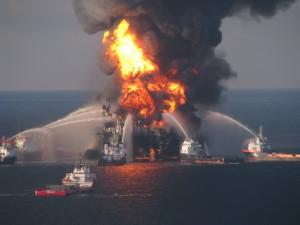On April 20, 2010, an explosion occurred on the Deepwater Horizon drilling platform in the Gulf of Mexico. The explosion, which killed 11 men, caused the rig to sink and started a catastrophic oil leak from the well. Before it was capped three months later, more than 100 million gallons of oil spilled into the Gulf—resulting in the largest offshore oil spill in U.S. history.
The Trustees immediately got to work. We are assessing injuries to natural resources—such as barrier islands, dunes, marshes, shorelines, and oyster beds—and lost recreation resulting from the spill. This thorough, scientific process of injury assessment is known as a Natural Resource Damage Assessment (NRDA). The NRDA will determine the type and amount of restoration needed in order to return the Gulf to the condition it would have been in but for the spill and to compensate the public for the natural resource services that were injured or lost.
Through an agreement with BP, we have been able to start early restoration planning and implementation before the damage assessment is complete. To date, nearly $700 million has been allocated for 54 early restoration projects. These projects are just the beginning of restoration.
This month, five years after the spill, we are looking back at the early restoration that has been completed so far. And we'll provide a glimpse of what the public can expect to see as early restoration continues. You can also see our new interactive map, which gives a quick review of locations and descriptions of early restoration projects across the Gulf.


